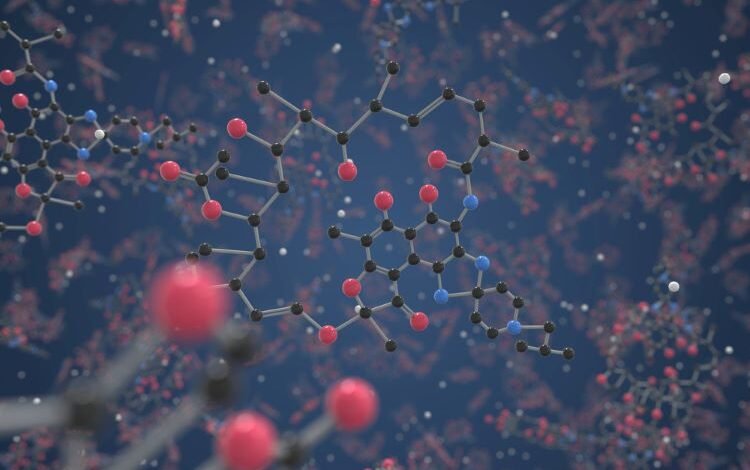New approach for small molecule nanosimilar analysis reported

A study on the small molecule antibiotic rifabutin has highlighted benefits of mechanistic compartmental analysis in evaluating nanomedicines.
A study published in Pharmaceutics has illustrated the superior sensitivity of mechanistic compartmental analysis for nanomedicines. The paper described how both techniques were applied to two small molecule, nanomaterial-based formulations for intravenous injection: albumin-stabilised rifabutin nanoparticles and rifabutin-loaded PLGA nanoparticles.
In the regulatory framework, pharmacometric analysis plays a significant role in the evaluation of bioequivalence, the paper noted. While non-compartmental analysis provides an unbiased data evaluation, mechanistic compartmental models such as the physiologically-based nanocarrier biopharmaceutics model have potential in offering improved sensitivity and resolving causes of inequivalence.
The small molecule antibiotic rifabutin has great potential for severe and acute infections of patients co-infected with human immunodeficiency virus and tuberculosis. The two aforementioned formulations differ significantly, both in formulation and material quality, resulting in an altered biodistribution pattern as confirmed in a biodistribution study in rats.
Findings summary
The data showed that rifabutin-loaded PLGA nanoparticles provided a stable matrix structure with a well-defined monodisperse particle size distribution. These retained approximately 50 percent of the encapsulated drug for at least one hour after injection.
NCA confirmed inequivalence between the formulations but the analysis could not differentiate between formulation- and dose-related influences.
In the study, the albumin-stabilised delivery system was prepared using the nanoparticle albumin-bound (NAB) technology. By undergoing a dose-dependent change in particle size, a small yet significant change occurred in the in vivo performance at different dose strengths.
Method of the small molecule nanomaterial-based formulation study
Two intravenous formulation prototypes of rifabutin with inherently different drug release patterns were developed.
The team evaluated the sensitivity of non-compartmental analysis (NCA) and mechanistic compartmental analysis using the PBNB model in detecting biopharmaceutical inequivalence, by comparing these two inequivalent formulations and their dose fraction-scaled pharmacokinetic profiles.
Suitability of NCA and model-based pharmacokinetic analysis to quantify existing differences were evaluated.
The sensitivities of both methods for the detection of biopharmaceutical inequivalence from plasma pharmacokinetics were evaluated in three settings:
- researchers compared the two formulation types (PLGA nanoparticles and albumin-stabilised particles) which is a major inequivalence due to differences in composition and physicochemistry
- the dose fraction-scaled profiles were used to compare albumin-stabilised nanoparticles at different dose strengths. Characterisation data confirmed this may lead to a minor change in the particle size.
- PLGA nanoparticles were compared at three different dose strengths which change drug-related parameters without affecting the material or physicochemical characteristics of the delivery system.
Overall results
A mechanistic compartmental analysis using the physiologically-based nanocarrier biopharmaceutics model led to an average difference of 152.46 percent between the two formulation prototypes.
Albumin-stabilised rifabutin nanoparticles tested at different dose levels led to a 128.30 percent difference, potentially due to changes in particle size.
Depending on the pharmacokinetic parameter (eg, AUC, Cmax, Clobs), the relative (percentage) difference from the average observed using non-compartmental modelling ranged from 85 percent to 5.2 percent. A change in the formulation type (PLGA nanoparticles versus albumin-stabilised rifabutin nanoparticles) resulted in a similar level of inequivalence as compared to a change in the dose strength.
selected dose strengths of PLGA nanoparticles resulted in relative differences of 66.7 percent (low versus medium) and 19.6 percent (low versus high), indicating limited robustness of this technique in resolving formulation-related inequivalence”
Notably, despite identical formulation parameters, the selected dose strengths of PLGA nanoparticles (low, medium, high) resulted in relative differences of 66.7 percent (low versus medium) and 19.6 percent (low versus high). This indicated limited robustness of this technique in resolving formulation-related inequivalence.
To compare, the PBNB model resolved formulation-related differences using parameters such as in vivo release rate and carrier half-life.
According to the paper, the average difference of 152.46 percent between PLGA and HSA-stabilised nanoparticles (across all dose strengths) was identified. The comparison of different dose strengths of PLGA nanoparticles, on average, showed a minimal 3.87 percent difference. This suggested a reduced influence of drug-related parameters on the analysis outcome.
Osipova et al. concluded the small molecule study “demonstrates the superior sensitivity and high robustness of mechanistic compartmental analysis in the evaluation of nano-medicines and highlights a new approach for the analysis of nanosimilars”.
Source link
#approach #small #molecule #nanosimilar #analysis #reported